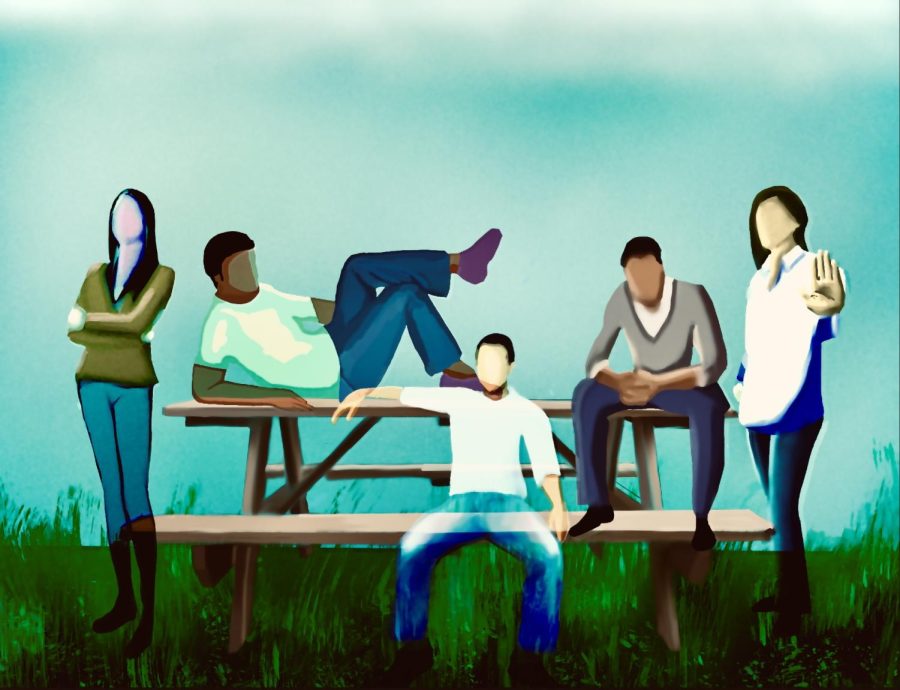OPINION: Lunch table ownership
Take a look at whether or not certain students deserve the right to ‘claim’ lunch tables as their own on campus with writer Tessa Shinden.
February 13, 2022
Anticipation within the classroom builds as the clock ticks closer to the end of the period: a time memorized by all. Stomachs growl and backpacks are zipped up early until teachers give the much-awaited dismissal. As students rush to their hour-long freedom and the hustle of the lunch line, many are faced with the difficult task of finding a table.
Whether their usual table is taken or they have taken someone else’s usual table, it is a controversial subject among many.
If a problem surrounding eating locations arose, how should students resolve it? Is it a first-come-first-serve issue, or does seniority play a major role in determining ownership?
The idea of a seating area “belonging” to a person/group might seem a bit arbitrary. After all, they probably don’t actually own the table. These issues tend to be a bit less black and white than whose backpack was placed there first. Instead, it comes down to how long they have been sitting there, both metaphorically and physically.
Consider this: A group of seniors, who have gotten used to enjoying their break at a particular table during their high school years, find their table inhabited by underclassmen. How else could they be expected to react besides irritated?
After all, it could have been that said seniors have been sitting at that table since they were freshmen. Nearly four years of being used to a spot, just for it to be “overthrown” is brutal.
This, however, could bring in a myriad of questions. A prominent one could be the idea that if these seniors first enjoyed the table as freshmen, then wouldn’t they be contradicting themselves by being mad at their cycle continuing? And ideas of seniority for that matter?
In a way, the answer is yes. But this answer would fail to recognize outside, rather uncontrollable factors. Are there other available areas? Was this table “given” to this group, or were they malicious enough—as could only be assumed—that they robbed another band of unsuspecting seniors of their seating area?
Overall, many components play a significant role in the nature of these situations. How large is the campus? How many tables are set up that day versus a normal basis? Even clubs and their meeting times could change unwritten seating arrangements.
Despite these obstacles, lunching on campus can be easily resolved if students took at least one idea into account: seniority. Although most of us might not pay a second thought to seating during breaks, this organization would give students unconscious comfort by allowing them to focus on other—arguably more important—tasks.
















Jackson MM • Oct 20, 2023 at 11:24 am
You guys are using tables?
merric • Mar 13, 2022 at 8:10 pm
freshmen don’t deserve tables they can stand
john • Feb 14, 2022 at 10:04 am
Someone is salty.